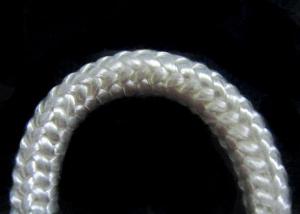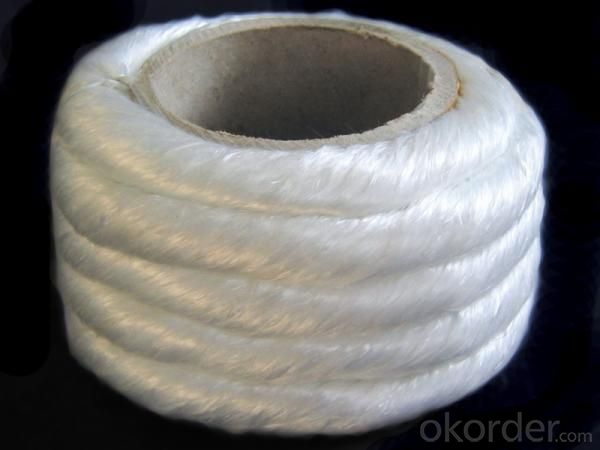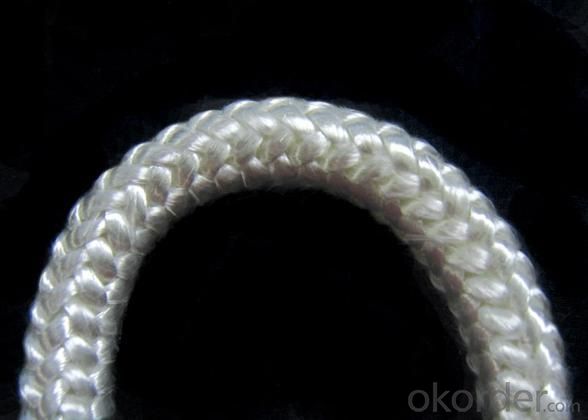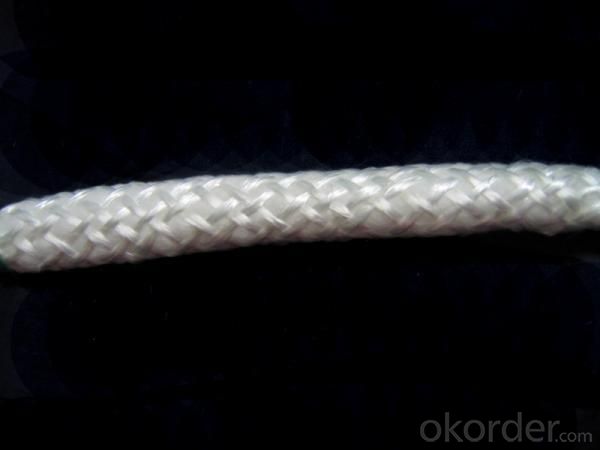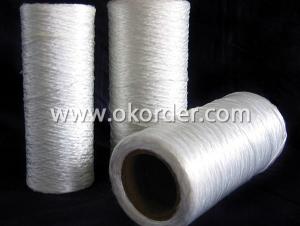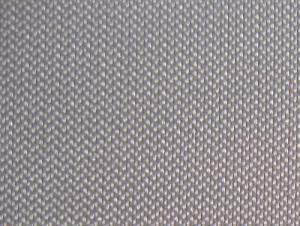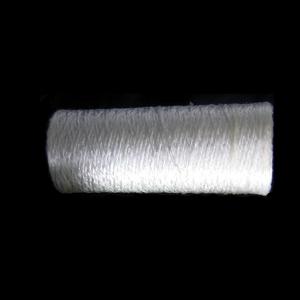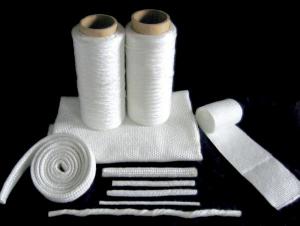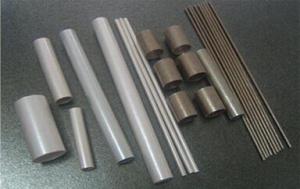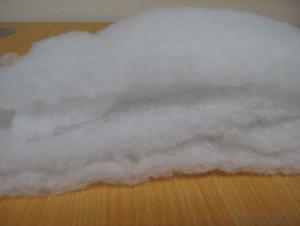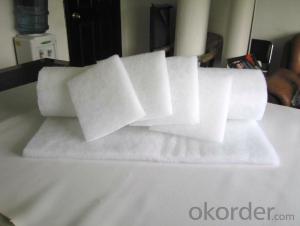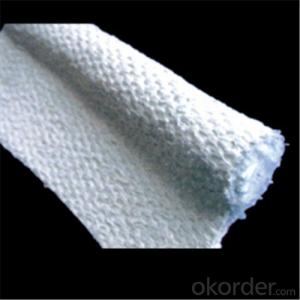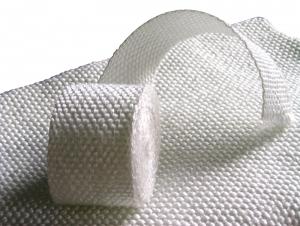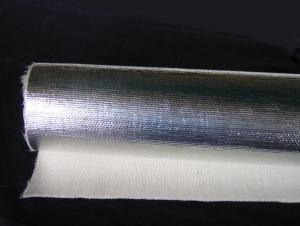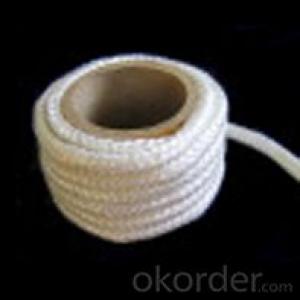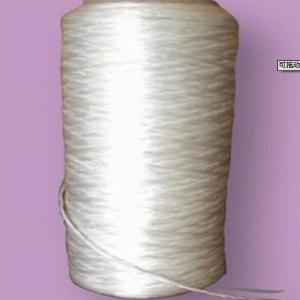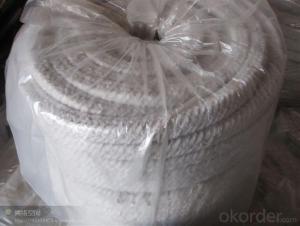Glass Fiber Textile Textured Fiberglass Rope
- Loading Port:
- China Main Port
- Payment Terms:
- TT or L/C
- Min Order Qty:
- 10 Tons kg
- Supply Capability:
- 2*20FCL Per Month kg/month
OKorder Service Pledge
OKorder Financial Service
You Might Also Like
Brief Description
Fiberglass Texturized Rope This rope has two kinds of structure.
One is braided rope which consists of parallel texturized threads, strips or ropes, with texturized yarn braided around them.
Another is twisted rope which is made bya certain number
Product Attributes
Type:Other Heat Insulation Materials
Place of Origin:China (Mainland)
Detailed introduction to Fiberglass Textured Rope:
Fiberglass Texturized Rope
This rope has two kinds of structure. One
is braided rope which consists of parallel
texturized threads, strips or ropes, with
texturized yarn braided around them.
Another is twisted rope which is made by
a certain number strands of texturized
yarn twisted tightly together to form a
rope with high tensile strength.
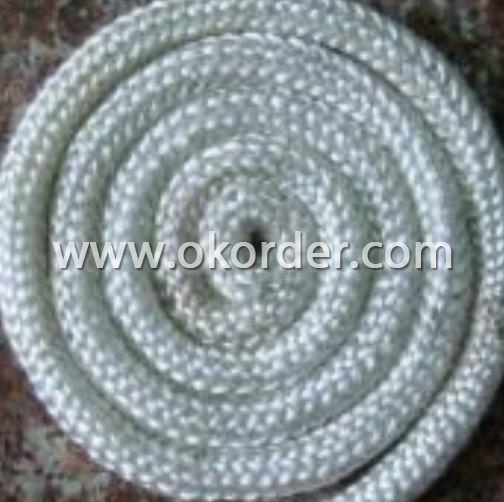
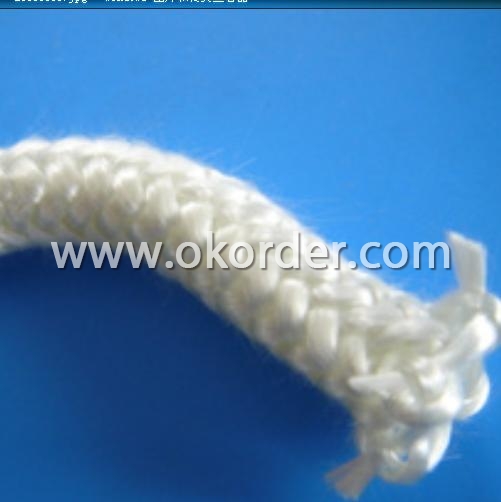
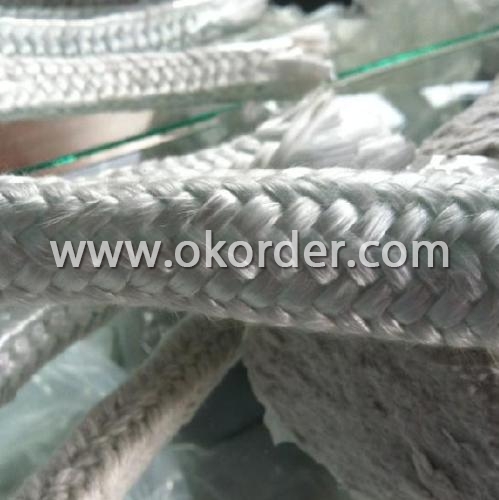
- Q: Can glass fiber textiles be used in reinforcement of 3D printed parts?
- Glass fiber textiles have the potential to reinforce 3D printed parts by enhancing their mechanical properties. These textiles, known for their strength, stiffness, and thermal resistance, are commonly used in various industries. When incorporated into 3D printed parts, they can make the components stronger and more durable. The reinforcement is achieved by embedding the glass fiber textiles within the printed part during the printing process, ensuring uniform distribution and integration. This technique is particularly beneficial for applications that demand high strength and dimensional stability, such as automotive and aerospace components, as well as structural elements. However, it is important to consider that the addition of glass fiber textiles may impact the printability and surface finish of the 3D printed part. Therefore, careful consideration and optimization of the printing parameters are necessary to achieve the desired results.
- Q: How does the fiber length affect the properties of glass fiber textiles?
- The fiber length of glass fiber textiles does have an impact on their properties. Firstly, longer fiber lengths generally result in stronger and more durable textiles. The longer fibers provide better interlocking and bonding within the fabric, leading to increased tensile strength. This makes the textile more resistant to tearing or breaking under stress. Secondly, longer fibers allow for better flexibility and improved drapability of the fabric. The longer fibers can be more easily woven or knitted into complex patterns, resulting in a textile that can be shaped and molded with greater ease. This is particularly important in applications where the fabric needs to conform to different shapes or be used in structural components. Additionally, longer fiber lengths can enhance the thermal and electrical conductivity of glass fiber textiles. The longer fibers provide a larger surface area for heat or electricity to transfer through the fabric. This can be advantageous in applications where thermal insulation or electrical conductivity is required. However, there are also some limitations to consider with longer fiber lengths. Longer fibers can make the textile stiffer and less comfortable to wear, reducing its suitability for certain applications such as clothing or soft furnishings. The longer fibers can also increase the weight of the fabric, making it less suitable for lightweight or high-performance applications. In summary, the fiber length of glass fiber textiles plays a crucial role in determining their strength, durability, flexibility, thermal conductivity, and electrical conductivity. The choice of fiber length should be carefully considered based on the desired properties and the specific requirements of the application.
- Q: How do glass fiber textiles resist heat transfer?
- The resistance of glass fiber textiles to heat transfer is due to the unique properties of the glass fibers themselves. Glass fibers possess a low thermal conductivity, meaning they are not proficient at conducting heat. When heat is applied to the surface of the glass fiber textile, the fibers do not readily transmit the heat to other areas of the textile. This characteristic aids in minimizing the transfer of heat from one side of the textile to the other. Moreover, glass fibers possess a high melting point, typically around 1500 degrees Celsius. This elevated melting point enables glass fiber textiles to endure high temperatures without melting or deteriorating. Instead of melting, the glass fibers retain their structural integrity, thereby further contributing to their heat resistance capabilities. Furthermore, glass fiber textiles can be equipped with an additional layer of insulation, such as aluminum foil or a ceramic coating. These coatings serve as a barrier that reflects heat radiation and prevents it from infiltrating the textile. This supplementary insulation elevates the heat resistance of the glass fiber textile, rendering it even more effective in resisting heat transfer. In conclusion, glass fiber textiles resist heat transfer by virtue of their low thermal conductivity, high melting point, and, in certain instances, added insulation. These properties make glass fiber textiles highly suitable for applications that demand heat resistance, including insulation materials, protective clothing, and fire-resistant barriers.
- Q: Can glass fiber textiles release harmful fibers?
- Yes, glass fiber textiles can release harmful fibers when they are damaged or deteriorated. These fibers, if inhaled, can cause respiratory issues and irritation. However, under normal conditions and proper maintenance, the risk of releasing harmful fibers from glass fiber textiles is minimal.
- Q: Can glass fiber textiles be used in the production of curtains and blinds?
- Yes, glass fiber textiles can be used in the production of curtains and blinds. Glass fiber textiles, also known as fiberglass fabrics, are made from fine fibers of glass that are woven together to create a durable and lightweight material. These textiles have excellent thermal insulation properties, as well as being fire-resistant and resistant to chemicals and moisture. When used in curtains and blinds, glass fiber textiles can provide several benefits. They can effectively block out sunlight, reducing glare and heat from entering a room. Glass fiber curtains and blinds can also provide privacy, as they are often made with a tight weave that restricts visibility from the outside. Additionally, glass fiber textiles are known for their durability, making them suitable for long-term use in curtains and blinds. They are resistant to fading, tearing, and other forms of wear and tear, ensuring that they maintain their functionality and appearance over time. Moreover, glass fiber textiles are easy to clean and maintain. They can be easily wiped down or cleaned with mild detergent, making them suitable for environments where cleanliness is important, such as kitchens and bathrooms. In summary, glass fiber textiles can be a viable option for the production of curtains and blinds. They offer thermal insulation, privacy, durability, and easy maintenance, making them a practical choice for both residential and commercial applications.
- Q: Can glass fiber textile be used in composites?
- Indeed, composites can utilize glass fiber textiles. Fiberglass fabrics, commonly known as glass fiber textiles, are frequently employed as reinforcement materials in the manufacturing of composites. These textiles are composed of intricate woven glass fibers that form a fabric. The fabric can be saturated with a resin, such as polyester or epoxy, to produce a composite substance. Glass fiber textiles possess remarkable versatility and offer numerous advantages when incorporated into composites. Firstly, they possess an exceptional strength-to-weight ratio, making them ideal for applications requiring lightweight materials. Furthermore, glass fiber textiles possess high tensile strength and stiffness, which enhance the composite structure and improve its overall mechanical properties. Moreover, glass fiber textiles exhibit excellent resistance to chemicals, moisture, and UV radiation, rendering them suitable for both indoor and outdoor applications. They can be easily shaped into intricate forms and customized to specific requirements by adjusting the weave pattern, weight, and thickness of the fabric. In conclusion, the utilization of glass fiber textiles in composites is widespread due to their strength, lightweight nature, resistance to various environmental factors, and ease of customization. They have become a favored choice in industries such as aerospace, automotive, construction, and marine where the demand for robust and durable materials is substantial.
- Q: Can glass fiber textiles be used in electronics applications?
- Yes, glass fiber textiles can be used in electronics applications. They are commonly used as insulation materials, reinforcing components, and substrates in electronic devices and circuit boards. Glass fiber textiles have excellent electrical insulation properties, high mechanical strength, and thermal stability, making them suitable for various electronic applications.
- Q: Can glass fiber textile be used outdoors?
- Yes, glass fiber textile can be used outdoors. Glass fiber textiles are known for their excellent durability and resistance to weathering, which makes them suitable for outdoor applications. They are commonly used in outdoor furniture, awnings, canopies, and other outdoor structures. Glass fiber textiles are also resistant to UV radiation, which helps prevent fading and degradation when exposed to sunlight. Additionally, their high strength-to-weight ratio makes them ideal for use in outdoor environments where strength and flexibility are required. Overall, glass fiber textiles are a reliable choice for various outdoor applications due to their exceptional durability and resistance to environmental factors.
- Q: Can glass fiber textile be used in artificial turf?
- Yes, glass fiber textile can be used in artificial turf. It is commonly used as a reinforcing material in the construction of artificial turf to enhance its strength, durability, and resilience.
- Q: How do glass fiber textiles affect worker safety?
- Glass fiber textiles can significantly enhance worker safety by providing excellent heat resistance and insulation properties. These textiles act as a protective barrier, reducing the risk of injuries caused by high temperatures, flames, and molten metal splatters. Additionally, they are lightweight and flexible, allowing workers to comfortably perform their tasks without compromising mobility or dexterity. The use of glass fiber textiles can therefore minimize the potential for burns, cuts, and other occupational hazards, promoting a safer working environment for employees.
Send your message to us
Glass Fiber Textile Textured Fiberglass Rope
- Loading Port:
- China Main Port
- Payment Terms:
- TT or L/C
- Min Order Qty:
- 10 Tons kg
- Supply Capability:
- 2*20FCL Per Month kg/month
OKorder Service Pledge
OKorder Financial Service
Similar products
Hot products
Hot Searches
Related keywords
